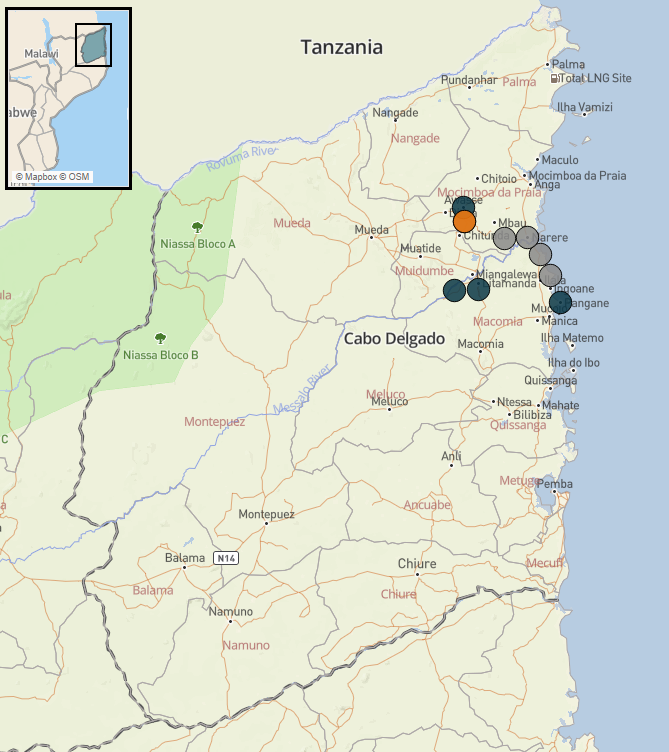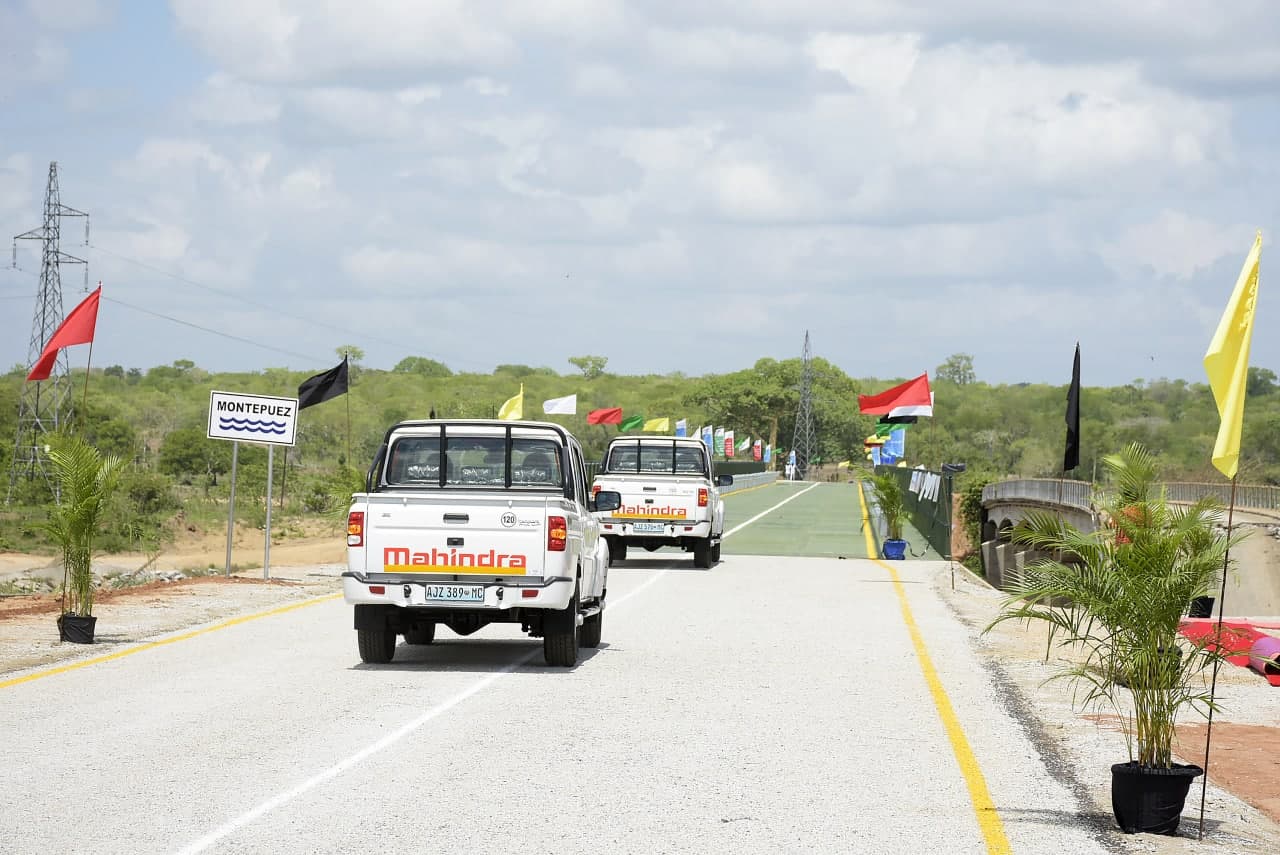The latter half of October saw the southern movement of insurgents from Macomia district into Quissanga district, where insurgents had not set foot for over a year. Insurgents have acted largely peacefully, and their purpose so far is not yet clear, but there are three plausible explanations. First, ongoing security forces operations in Macomia district’s Catupa forest may have forced insurgents south in search of safety. Secondly, the southern movement could be a reconnaissance mission to scout terrain for a future base of operations. Lastly, they may have been moving south in order to then move westwards across the N380 and back north to the Messalo river.
This article was first published on 20 November 2023 as part of the Cabo Ligado Monthly: October 2023

After several days of concentrated activity around southern Macomia district, where some insurgents told locals they were on their way to Metuge district, the first confirmed insurgent sighting in Quissanga was reported on 20 October. On that day, around 20 insurgents were observed in the woods outside Cagembe village, prompting some villagers to flee to Pemba. Over the next few days, insurgents were spotted in villages across the northern breadth of the district, in the villages of Bilibiza, Nivico, Manica, and Linde. Insurgents made repeated visits to Cagembe, suggesting an encampment may be nearby.
Some insurgents carried bladed weapons and appeared to be starving, one source told Cabo Ligado. The insurgents, however, reassured the locals that they meant no harm, emulating the conciliatory approach they adopted toward coastal communities in Macomia. Security forces reinforced Quissanga and Metuge in response to these movements, but no insurgent offensive actions have been reported. There were, however, unconfirmed reports that a boat carrying around 40 insurgents attempted to land somewhere north of Pemba on 25 October but aborted due to the concentration of security forces.
Moving south puts insurgents closer to the provincial capital Pemba and the N1/N14 highway, which links it to the mining concessions in Ancuabe, Montepuez, and Balama districts. In the past, it has only taken a small number of insurgents threatening these concessions for operations to be suspended, causing serious economic disruption. In February this year, around 30 insurgents clashed with security forces in Nairoto, Montepuez, killing five, prompting Gemfields to evacuate staff from one of its gold mining projects. The week before, Islamic State had boasted of “striking the economy of the Mozambican government” in its publication, Al-Naba. This could be a realistic motive behind the southern push. In any case, it demonstrates the insurgency’s enduring ability to evade containment and appear anywhere in the province at any moment, despite the efforts of security forces.
It is also possible that this southern movement has been forced on insurgents by ongoing, intermittent operations, known as Operation Golpe Duro, by security forces in the Catupa forest of Macomia, where security sources believe at least one insurgent base could still be active. The appearance of insurgents in Quissanga could, therefore, reflect some success by Mozambican and Southern African Development Community troops. Previous experience suggests that the insurgents do not have the networks to maintain a presence in the southern districts, making their southern movement likely a means of avoiding Golpe Duro and looping back to their traditional strongholds along the Messalo river. This presents a risk to Muidumbe district in particular, as well as the western and southern areas of Mocímboa da Praia district. This presents a real threat to residents of those areas.










